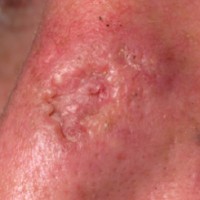
Advanced Malignant Melanoma Treatment
In the news last week, professional golfer Padraig Harrington revealed that he has been treated for skin cancer. He described having several cancers removed from his face.
Skin cancer is an increasingly common problem in modern society, with a 4-fold increase in incidence over the last few decades. The sunshine plays a role in a persons likelihood of developing skin cancer. Repeated burning episodes (especially in youth) increase the risk of melanoma, whilst long-term exposure increases the risk of non-melanoma cancers.
It is therefore fairly typical that those who spend their lives outdoors are more prone to skin cancer and also those who live in sunny areas. The professional footballer Vinnie Jones reported that he had been treated for melanoma recently (as we reported in these very pages) and the Australian actor, Hugh Jackman, had a non-melanoma cancer removed.
Exciting news in the treatment of advanced malignant melanoma, is that there are now three exciting new treatments undergoing trials that have been shown to shrink tumour size and extend survival. This kind of progress has been missing in the treatment of melanoma, with the survival rates (for advanced disease) over the last 40 years not having improved at all. Until now that is.
The three drugs that are being pioneered and tested (Ipilimumab, Vemurafenib and anti-PDL antibody) essentially use a patient’s own immune system to attack the melanoma cells causing cell death and tumour shrinkage. Although, the cancer is not yet curable, some patients from early trials remain disease-free today.
Here’s a reminder of what to look out for if you are worried about skin cancer:
1) Rapidly growing or enlarging moles
2) Moles that change shape and become irregular or asymmetrical
3) Blurring of the borders of a mole
4) Changing colour, particularly darkening, or more variations of colour appearing
5) Ulceration or bleeding
Remember – if you have any fears about a mole, get it checked out as soon as possible, either by your GP or a dermatologist. The key thing to treating cancer is to treat is as early as possible. This maximizes your chances of a cure and minimises the amount of scarring that procedures might leave.
If in doubt, get your moles checked!




